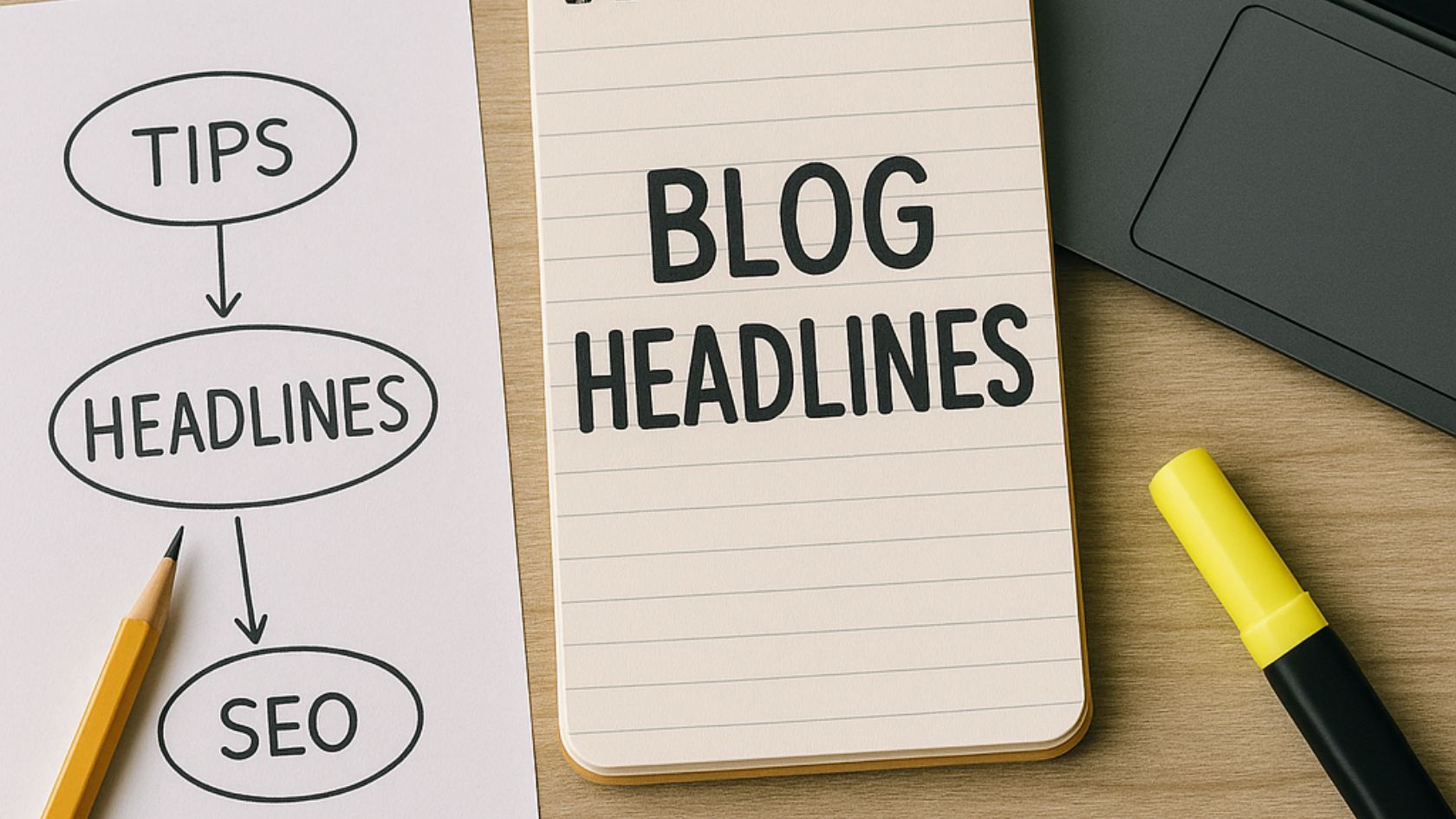
Creating Effective Blog Headlines: A Practical, SEO-Friendly Guide

Effective blog headlines are the difference between a post that gets ignored and one that gets opened, shared, and ranked.
When you study the craft of headline writing, you’ll notice repeatable patterns, proven templates, and a set of psychological triggers that nudge readers to click. For a quick deep dive into headline psychology and examples, see this practical guide on how to craft post titles that draw readers. In this article, we’ll turn big ideas into concrete steps you can use today.
Our goal is to help you create effective blog headlines that are compelling, specific, and discoverable in search. You’ll get a clear framework, SEO checkpoints, high-performing templates, and a lightweight testing workflow so you can improve click-through rates without guesswork.
If you publish product-focused content or buying guides, strong headline structure matters even more. Consider how high-intent posts (like reviews or roundups) use specificity, freshness, and benefit-driven phrasing to signal value. For instance, a seasonal or trends post might reference a current market, such as this comprehensive roundup of kitchen products in 2025: the ultimate guide to high-converting kitchen products. The takeaway for you: promise a clear outcome, specify the audience or use case, and hint at novelty.
Why effective blog headlines matter
Headlines are the front door of your content. They set the expectation, convey your unique angle, and determine whether the right readers enter. From SEO to social sharing, your headline influences engagement metrics such as impressions, click-through rate (CTR), dwell time, and link acquisition. A modest improvement in CTR can yield outsized gains when multiplied across organic search impressions.
A 7-step framework for creating effective blog headlines
1) Clarify the reader outcome
Ask, “What will the reader be able to do after reading?” Turn that outcome into a promise you can deliver. Replace vague phrasing with concrete benefits. Instead of “Tips for Writing,” try “Write Faster Drafts Without Losing Quality.”
2) Identify the angle and constraint
Strong headlines narrow the scope. Add a constraint—time, budget, skill level, or tool—to sharpen relevance. “SEO for Beginners in 30 Minutes” is immediately clearer than “SEO for Beginners.”
3) Map the search intent
Match the headline to the dominant intent: informational (learn), navigational (find), transactional (buy), or commercial investigation (compare). If your post targets “best X for Y,” signal comparison and recency (“Best Budget Microphones for YouTube in 2025”).
4) Place your focus keyword with care
To build effective blog headlines for SEO, include your focus keyword as close to the start as natural language allows. Keep it readable—never force the phrase. If your keyword is long, prioritize clarity over exact-match stuffing.
5) Add specificity and proof
Numbers, timeframes, datasets, or source types add trust. “7 Research-Backed Ways to…” or “A 14-Minute Blueprint to…” can lift CTR because they imply a complete, efficient answer.
6) Adjust for platform and truncation
On mobile SERPs, aim for 50–60 characters to reduce truncation risk. On social, slightly longer curiosity-driven headlines can perform better. Draft variants for each platform.
7) Test, measure, and iterate
Create 3–5 headline variants per post. Track CTR in Search Console and social analytics. Over time, you’ll learn which word patterns and structures resonate with your audience.
High-performing headline templates (with examples)
Use these as starting points—then tailor to your audience and promise. Many will help you craft effective blog headlines without sounding generic.
- How to [Achieve Outcome] Without [Common Objection] — How to Write Daily Without Burning Out
- [Number] Proven Ways to [Goal] in [Timeframe] — 9 Proven Ways to Outline a Post in 15 Minutes
- The [Year] Playbook for [Audience/Goal] — The 2025 Playbook for Solo Content Creators
- [Role/Audience]’s Guide to [Outcome] — Marketer’s Guide to Repurposing Long-Form Content
- [Tool/Framework] Cheatsheet — E-E-A-T Checklist Cheatsheet
- [Mistake/Trap]: What Most People Get Wrong About [Topic] — Keyword Cannibalization: What Most People Get Wrong
- [Number] Headline Formulas You Can Copy Today — 17 Headline Formulas You Can Copy Today
- [Before/After]: From [Problem] to [Desired State] — From Blank Page to First Draft in 30 Minutes
SEO checkpoints for effective blog headlines
- Include the focus keyword naturally. Prefer it near the beginning if it reads well.
- Stay within ~50–60 characters for the main variant that targets search.
- Match search intent and reflect the post’s actual substance (no clickbait).
- Promise a concrete benefit or new information; avoid vague generalities.
- Use numbers or brackets where appropriate: [Checklist], [Updated 2025], [Data].
- Avoid keyword stuffing. One exact match plus semantic variations usually suffices.
- Test alternatives for social and newsletters; what wins on SERP may differ on Twitter or LinkedIn.
Power words and emotional angles (use sparingly)
Emotion can lift CTR, but restraint preserves credibility. Consider curiosity (“surprising,” “little-known”), speed (“instant,” “quick-start”), certainty (“proven,” “backed by data”), and relief (“without burnout,” “stress-free”). Combine one emotional angle with a clear benefit to craft effective blog headlines that feel both compelling and trustworthy.
Rewrite workshop: from bland to specific
Bland: Better Headlines for Blogs
Improved: Effective Blog Headlines: 11 Templates That Boost CTR in Under an Hour
Why it works: It front-loads the focus keyword, adds a number, implies speed, and specifies the benefit.
Common mistakes to avoid
- Mismatch between headline and content: Overpromising erodes trust and harms engagement.
- Weak verbs and abstractions: Prefer “Double Your Drafting Speed” to “Improve Writing Efficiency.”
- Stacking too many angles: One clear promise beats three diluted ones.
- Ignoring audience vocabulary: Mirror the terms your readers use; check forums and SERPs.
- Forgetting freshness: For rapidly changing topics, add recency signals like year or version.
A lightweight process you can reuse
- Define the outcome. Write a one-sentence promise.
- Draft 5 variants. Use different patterns (How-To, List, Bracketed, Year, Role-Based).
- Score for clarity, specificity, and novelty. Keep the top two.
- Check SEO constraints. Focus keyword placement, length, intent alignment.
- Pick the SERP variant and a separate social variant if needed.
- Publish and track CTR. Revisit after two weeks; swap if the alternative looks stronger.
Headline checklist before you publish
- Focus keyword appears naturally (ideally near the start).
- Clear benefit or outcome is stated.
- Specificity added (number, timeframe, audience, proof).
- Length is SERP-friendly; social variant prepared if needed.
- No clickbait; headline matches actual substance.
- Language mirrors your reader’s vocabulary.
- Consider brackets for context: [Guide], [Template], [Updated 2025].
Examples you can adapt
- Effective Blog Headlines: 13 Data-Backed Templates That Lift CTR
- How to Craft Effective Blog Headlines Without Sounding Clickbaity
- Effective Blog Headlines for Product Reviews: A 2025 Checklist
- Effective Blog Headlines in 60 Characters: 17 Swipeable Ideas
- From Idea to Click: Effective Blog Headlines That Promise Real Outcomes
Conclusion
Creating effective blog headlines isn’t a one-time task—it’s a habit. The more you apply this framework, the more you’ll understand what resonates with your audience. Keep testing, keep refining, and let performance guide your tweaks. If you also run paid distribution, study what wins in competitive feeds; tools for native ad intelligence can help you spot persuasive angles and phrasing that translate into higher CTR on organic channels too.